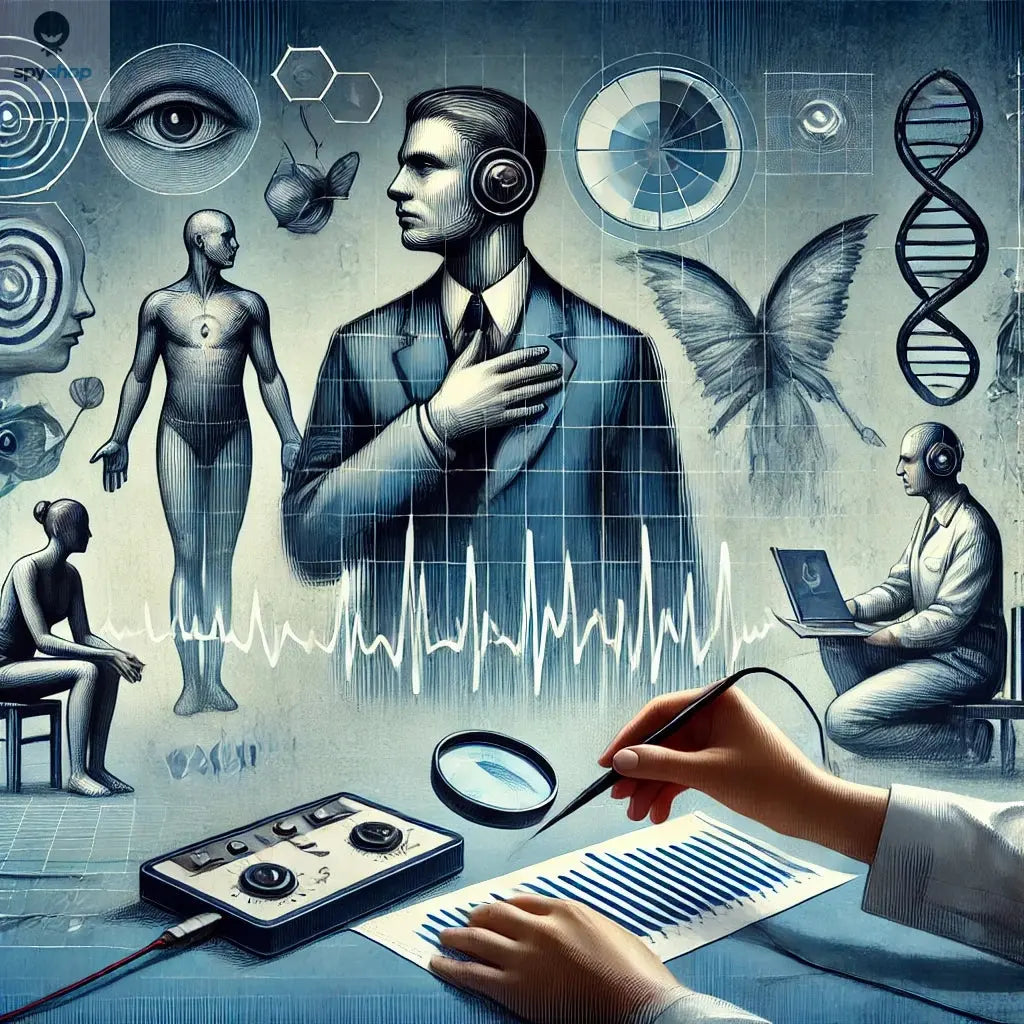
Decoding Deception: Spotting Lies in 5 Detailed Steps
Man's shadow exaggerating a long nose to represent deception.
Deception is an inherent part of human interaction—whether in personal relationships, business dealings, or casual conversations. Understanding how to spot dishonesty isn't just about detecting a lie; it's about gaining clarity, building trust, and protecting your interests. This comprehensive guide delves deep into spotting deception in five critical steps, enhancing your skills with real-life applications and advanced tools like listening devices.
Step 1: Recognising Inconsistencies
A common hallmark of deception is the lack of coherence in someone's story. Lies often unravel due to conflicting details or sudden shifts in the narrative across retellings. Spot these gaps by asking follow-up questions that revisit earlier statements.
Example: If someone claimed to be at a restaurant but later can’t recall the meal or companions, it might indicate fabrication.
Pro Tip: Leverage digital voice recorders or advanced listening devices to replay conversations. Revisiting audio evidence can highlight subtle contradictions you may have overlooked during live discussions. Law enforcement agencies often rely on similar tactics during interrogations for clarity and accuracy.
Step 2: Observing Non-Verbal Cues
Body language often reveals truths that words conceal. Signs like avoiding eye contact, fidgeting, or excessive hand gestures can betray dishonesty. More nuanced indicators, such as micro-expressions—brief facial expressions contradicting spoken words—offer further insights.
Non-verbal cues include:
- Avoidance: Failure to maintain consistent eye contact.
- Self-soothing: Rubbing hands, touching the face, or shifting weight repeatedly.
- Micro-expressions: A fleeting grimace amidst a smiling facade.
Audio Indicators: Listening devices can detect auditory signals of anxiety, such as stammering, throat clearing, or rapid speech. These vocal tics often accompany nervous lies.
Step 3: Detecting Overcompensation
Liars often go overboard in an attempt to sound convincing. They may flood you with unnecessary details, hoping that their verbosity will overshadow inaccuracies.
Example: “I was at the grocery store at 5:05 PM. I bought eggs, milk, and bread. The cashier was wearing a green shirt.”
While detailed accounts may seem credible, excessive and unsolicited information is often a red flag.
Action Plan: Use recording devices to dissect conversations. Replaying over-explanations can expose contradictions or fabricated elements.
Step 4: Identifying Defensive Behaviour
Defensive reactions, such as hostility or evasion, are often signs of deception. When questioned, liars might shift blame, avoid direct answers, or lash out emotionally to deflect attention.
Common Defensive Tactics:
- Questioning the question: “Why do you even want to know that?”
- Redirecting blame: “I didn’t do it; why don’t you ask them instead?”
- Anger outbursts: A sudden spike in frustration to divert attention.
Why Recordings Help: Capturing these interactions with listening devices provides an unaltered account for further review, helping identify patterns of defensiveness over time.
Step 5: Trusting Your Instincts
Humans possess a remarkable ability to detect dishonesty on a subconscious level. If a situation feels off, your gut might be picking up on inconsistencies or subtle cues that your conscious mind misses.
Enhancing Intuition with Evidence: While gut feelings guide you, combining them with concrete evidence—like recordings or detailed notes—solidifies your conclusions.
The Role of Technology in Detecting Lies
Listening Devices as Tools
Modern listening devices are not just for espionage; they are practical tools for enhancing your observational capabilities. From digital voice recorders to covert audio surveillance, these gadgets provide clarity and context for complex interactions.
Benefits:
- Accuracy: Review recorded conversations to spot inconsistencies or overcompensation.
- Clarity: Audio playback reveals vocal stress or hesitation.
- Discretion: Covert devices capture authentic responses without altering the subject’s behaviour.
Ethical and Legal Considerations
While listening devices are invaluable, using them requires adherence to privacy laws. In most jurisdictions, recording private conversations without consent is illegal. Always consult local laws or seek legal advice before deploying such technology.
Why Law Enforcement Records Interrogations
Police and investigators record interviews to ensure:
- Accuracy: Preventing disputes over what was said.
- Evidence Integrity: Providing a clear account for legal proceedings.
- Pattern Recognition: Identifying recurring defensive tactics or inconsistencies.
This practice highlights the value of audio recordings in identifying deception.
Advanced Techniques for Deception Detection
- Behavioural Analysis: Training in micro-expression recognition can significantly enhance your observational skills.
- Forensic Audio Tools: Advanced software detects voice stress and anomalies in recorded conversations.
- AI-Powered Analytics: Emerging AI tools analyse speech patterns for signs of lying, offering insights previously inaccessible to humans.
Practical Applications
Detecting deception is not limited to criminal investigations. Everyday scenarios where these skills prove invaluable include:
- Hiring: Identifying red flags in interviews.
- Parenting: Detecting dishonesty in children.
- Relationships: Building trust through open communication.
- Business: Spotting dishonesty in negotiations.
Conclusion
Unmasking deception combines art and science—attentive observation, critical listening, and ethical use of technology. By mastering these five steps, you can become adept at distinguishing truth from falsehood, whether in personal interactions or professional settings. Remember, knowledge is your greatest tool, and with the right approach, you can ensure honesty and transparency in all your dealings.
Stay vigilant, stay informed, and let the truth always guide you.
